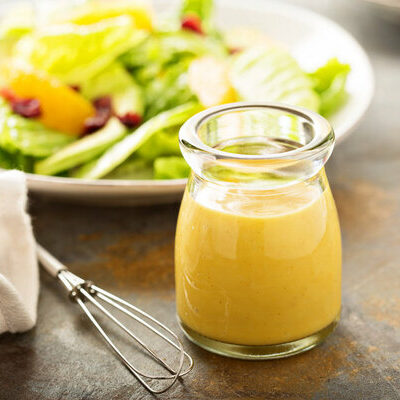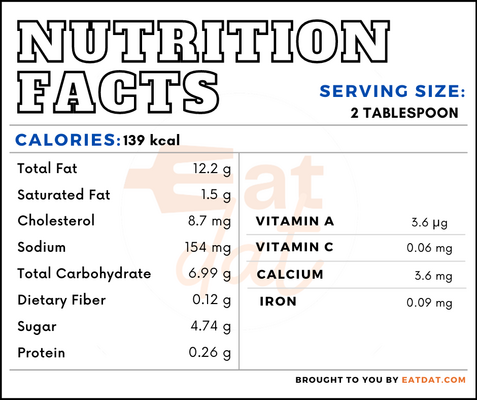
Honey Mustard Dressing
What is Honey Mustard Dressing?
Honey mustard dressing is a salad dressing that is popular in the US, and is ubiquitous in homes, restaurants, and salad bars. Its main ingredients are mustard, honey, apple cider vinegar, olive oil, lemon juice, salt, and pepper. The mustard and honey provide the most important flavors, but the vinegar and olive oil are vital ingredients.
- Essentially, because they bind the mixture together and provide a creamy consistency.
- The dressing has a yellowish-orange color, and a sharp and sweet taste with a burst of flavors.
The top 7 most popular honey mustard dressing brands are:
- Sweet Baby Ray’s
- Woeber’s Reserve
- Kraft
- Ken’s Steak House
- Beaver
- Inglehoffer
- Honey Baked
Origin of honey mustard dressing
The mixture of honey and mustard has been used since ancient times, and was popular in Ancient Egypt and Ancient Rome. After all, the sweetness of honey helps soften the sharpness of mustard. One of the first mentions of a honey mustard sauce comes from De re Coquinaria, a Roman cookbook. There are also references to this combination in Arabic cookbooks from 13th century Andalusia. Today, this dressing remains popular around the world in places where its ingredients are readily available.
Nutrition
Nutritional profile for honey mustard dressing (2 tbsp):

In addition, honey mustard dressing also contains magnesium, phosphorous, potassium, selenium, folate, choline, retinol, carotene, cryptoxanthin, lutein + zeaxanthin, tocopherol, vitamin D, vitamin K, and fatty acids.
Mustard is a rich source of fats, including omega 3 and omega 6 fatty acids. Also, it contains vitamin A, vitamin C, vitamin K, folate, niacin, and choline in large quantities. In addition, mustard has good amounts of calcium, iron, magnesium, phosphorus, potassium, sodium, and selenium. Mustard leaves have β-carotene, which has anti-carcinogenic properties.
Honey has been used in traditional medicine for centuries in different cultures. It contains antioxidant properties, and studies suggest that honey exerts antioxidant, antimicrobial, anti-inflammatory, antiproliferative, anticancer, and antimetastatic effects. Furthermore, honey can be used in the treatment of wounds, in controlling diabetes, cancer, asthma, as well as preventing and curing cardiovascular, neurological, and gastrointestinal diseases.
Commercial production
To prepare honey mustard dressing, mustard, honey, apple cider vinegar, salt, olive oil, and pepper are required. A good quality mustard must be chosen. Other flavoring agents such as garlic and lemon juice may also be added. Finally, all the ingredients are mixed together and whisked until they blend into each other. This dressing may be stored in the refrigerator for up to three weeks.
Honey mustard dressing recipes
This dressing is used as a salad dressing but may also be used for barbecue sauces, glazing of meat dishes, dipping sauce, and a base for vinaigrettes. Here are some popular recipes:
- Honey Mustard Dressing
- Honey Mustard Chicken
- Beef Kabobs
- Tenderloin, Cranberry, and Pear Salad
- Summer Market Salad
- Glazed Ham
- Ham and Cheese Croissant
- Baby-Back Ribs
- Green Beans
FDA regulations
There are no specific regulations for honey mustard dressing in the US. However, most other salad dressings are regulated. Mustard is classified as a spice by the FDA and is a natural seasoning. Black mustard (brassica nigra, brown mustard (brassica juncea), and white mustard (brassica hirta) are all included under this classification. Moreover, honey is defined as a sweet, syrupy substance produced by honeybees from the nectar of plants. The color of honey may vary, and its consistency may be fluid, viscous, or crystallized. The USDA regulates honey and its production, packaging, and labelling in the US.
References
Honey Mustard: An Ancient Dipping Sauce, SPICEography, https://www.spiceography.com/honey-mustard/
Samarghandian, Saeed et al. “Honey and Health: A Review of Recent Clinical Research.” Pharmacognosy research vol. 9,2 (2017): 121-127. doi:10.4103/0974-8490.204647, https://www.ncbi.nlm.nih.gov/pmc/articles/PMC5424551/
Jetter, Karen M et al. “Yes We Can: Eating Healthy on a Limited Budget.” Journal of nutrition education and behavior vol. 51,3 (2019): 268-276. doi:10.1016/j.jneb.2018.12.002, https://www.ncbi.nlm.nih.gov/pmc/articles/PMC6601616/
